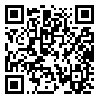BibTeX | RIS | EndNote | Medlars | ProCite | Reference Manager | RefWorks
Send citation to:
URL: http://jdm.tums.ac.ir/article-1-166-en.html
Background and Aim: Inducing anesthesia is one of the important tasks in dentistry. Among various techniques for injection, the Inferior Alveolar Nerve Block (IANB) technique is one of the most practical and prevalent methods. However, according to some proofs in reference books, the success rate for this technique is some how low. Therefore the success rate of IANB performed by 10th-semester undergraduare students from Faculty of Dentistry of Tehran University of Medical Sciences was assessed in this study.
Materials and Methods: In this cross-sectional study from patients referring to oral and maxillofacial surgery ward, 20 patients with predefined conditions were selected. For each of them, two IANB injections were done in two separated days one by a student and the other by an attend (or resident) of maxillofacial surgery ward. Success or failure of each injection was examined by Pin Prick test. In this study, the non-parametric Willcoxon test was used.
Results: In this study, the success rate of IANB was 70% and 90%, respectively for students and attends (or resident).
Conclusion: Significant statistically difference was seen between the two groups, we hope that through further practical education, this differences rsduce in following similar studies.
| Rights and Permissions | |
 |
This work is licensed under a Creative Commons Attribution-NonCommercial 4.0 International License. |




